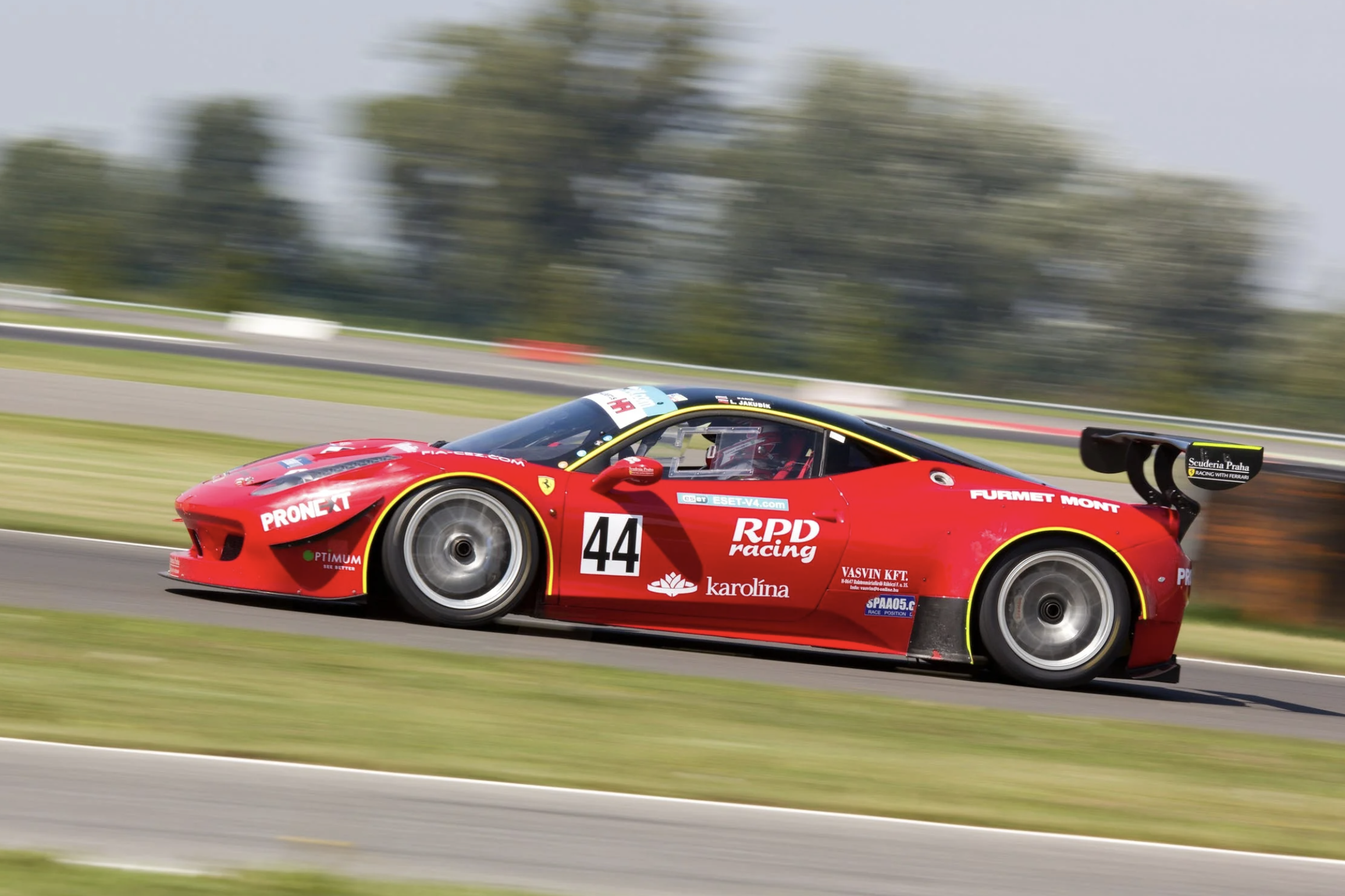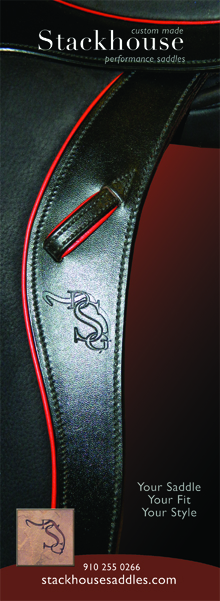Search the Site
Guest Blog # 119: "Eventing vs Autocross!" by Soraya V Juarbe-Diaz

When Lesley put up a post about how driving habits could affect your riding, the first thought that came to my mind was “You don’t want to see how I drive...” Mostly because I like to go fast in a car, the faster the better... kind of like the reason I started eventing. I giggled at the thought, but when I gave it more thought than just the immediate reaction, I realized that the two have a lot in common.
Before you have pictures of the Fast and The Furious in your mind, let’s make it clear I do not street race. My every day driving is unusual only in that I signal all my turns and lane changes, and I actually drive in the rightmost lane unless I am passing. When I pull my horse trailer I am overtaken by most everybody, I accelerate and decelerate in slow motion, and make sloooow turns so I my precious cargo has time to adjust to the change of speed and direction.
I autocross (AX). Some hardcore motorsports participants do not consider it “racing” as it is not wheel to wheel competition, but it is a timed event. The competitions, usually held in parking lots or large expanses of asphalt or concrete (like runways and tarmacs), consist of negotiating a course marked out by cones, in classes that attempt to group a multitude of vehicles by their performance potential. It’s like a road race with all the turns (“corners”) coming at you fast and in rapid sequence, averaging in length to about 45-50 seconds per run.
While there may be 2 or 3 and, occasionally 4, people running at the same time, it is in different parts of the course where they wouldn’t cross paths; think cross country phase of eventing.
After my first autocross on some else’s very nice car, I was hooked, but I was never loaned that car again.
Imagine your first event had been on a dependable Prelim schoolmaster, never to be offered it again. Just like in eventing, turns out you can autocross in most any car, including your daily driver, as I did. After a Porsche introduction, an ’08 Honda Fit was closer to the way I event —on a shoestring budget— so I was undaunted.
And here is where things turned... interesting.
To the surprise of many, I progressed quickly, not immediately winning, but getting faster and faster, faster than drivers in better cars. Despite what the F & F crowd will have you think, more modifications (“mods”) do not a faster driver make, except maybe if you are just going in a straight line. Just like buying fancier tack or more expensive gadgets doesn’t make you a better rider. In one season I was “on the podium” locally in my class —Win, Place or Show, LOL— even against the uber poor-persons-race car, Miatas.
Around that time, which was also when I learned to distinguish which cones were meaningful on course and which were just “noise” to draw your attention, I came to the realization that riding horses in eventing and driving cars in autocross were very similar, and perhaps part of my rapid progression. Huh?
I kid you not. Let’s start with showing up with whatever is in your backyard, or garage; eventing sees horses of all shapes and sizes, and autocross see people in 4 cylinder grocery getters all the way to fully prepped GT4s. In autocross, courses are never the same from one competition to the next, even in the same location. They are made of known elements; slaloms, Chicago boxes, bus stops, lane changes, sweepers... combined differently each time. You know, like oxers, verticals, fans, corners, water jumps, skinnies... You walk the course in advance and plan your (racing) line —where you want to be at any particular part of the course and especially with related elements— along with your braking points and your acceleration zones.
All of this sounded familiar: it was the same thing I did walking my cross country course, complete with my line, take off points, half halts... damn! The shortest/most economical line that fits your particular car/horse is one of the things you determine during your course walk. If the ground has any contour, you have to account for that, too. While not as dramatic as variations in cross country terrain, changes in camber on the road surface have to be accounted for and thought about. We do worry about portions that may be harder or more slippery.
Without realizing it, I was using the same approach in AX as I walked the course that I did in XC. Seeing the line is paramount. I already knew how to do that.
You know that thing about looking up and ahead, instead of at the jump you are a stride or two from or, worse, under you? Same in Autocross!!! Once you set up your car for the element in front of you, you are advised to be looking 2 elements ahead! That is one of the hardest things for novice autocrossers to master; I had a leg up (Pun intended!).
The peanut butter to that jelly... “look around your turn” is essential in autocross, too! On a horse, doing that turns your upper body and arms and sets your body up to turn your horse. It does the same thing on the steering wheel. Picture it... you look left, turn from your waist, your right arm gets “longer” and your left one “shorter”- if you’re holding a steering wheel your right arm goes up and left and your left arm... down and right... And it all starts with where the eyes go.
Push the seat and backrest back so you’re almost reclining for a nap? Nope... shoulders close to the line of your hips... you need a little bend in our elbow for the optimal hand, seat & body position. Check.
While we are in the subject of hands, relaxing the shoulders and arms is also a must; tight shoulders translate to rigid arms and often a death grip on the wheel. Ham fisting the controls is about as productive in driving fast as it is in riding a horse – no bueno. Instructors advise you to not forget to breathe. How many times have you heard that from your riding instructor? A lot of drivers stretch before and in between runs, to stay relaxed and loose.
In autocross, we talk about making small inputs (steering) so as not to upset the balance of the car. You learn to shift the car’s weight purposefully, to the steering or powering wheels in order to have the best handling, but you don’t want unruly changes. Similarly, we talk about either keeping/helping the horse balance or not disturbing it. Fast runs look “slow” because they are smooth. Any time you are going sideways (think up and down in horses) instead of forward, you are losing time... “smooth is fast.” Another common admonishment: “go slow in the slow parts and fast in the fast parts” – something that may come out of a cross country coach’s mouth just as well. And yet, you need to attack the course...Egads! AX and XC are fraternal twins – different but similar.
Finally, while there is a lot of strategic planning before a run, during one a lot of seat of the pants driving and feeling come into play. You get feedback from your seat and the steering wheel, just as your horse gives you information through their back and via the reins and you have to think on the fly and adjust your plan accordingly.
I also found a welcoming community; autocrossers are just as friendly and helpful as eventers, before during and after an event. We offer advice, share strategy, loan tools and equipment, and sometimes “loan a car” – a car can be co-driven in the same class or different one so long as the car fits the class description. Can’t do that once you’ve started competing in eventing, but you could certainly do it before things start to some degree, depending on how “official” the show is (schooling v. sanctioned).
Back to the original catalyst of this long-ish brain fugue – don’t slouch in the driver’s seat! Oh, and did I mention that cars have a penchant for breaking the morning of the autocross or after you’ve towed them to the venue?
Hmm....






